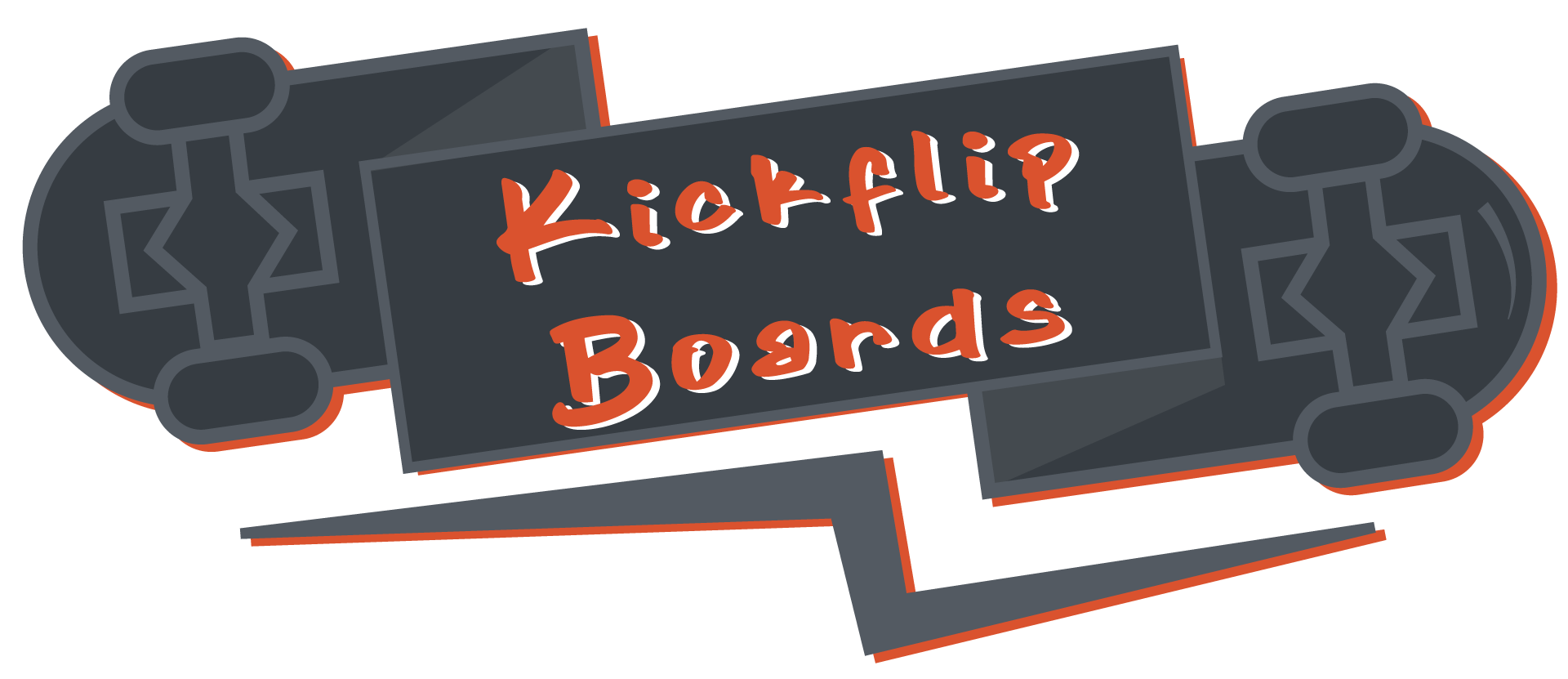Skateboarding is all about precision and control, and one of the most overlooked aspects of improving your ride is understanding how to properly adjust your skateboard bushings. Whether you’re a casual rider or a competitive skateboarder, getting your bushings dialed in can make a world of difference in terms of performance and stability. From optimizing your grip and response to ensuring longevity and preventing damage, mastering the art of adjusting skateboard bushings is a key component of enhancing your overall riding experience. In this comprehensive guide, we’ll delve into everything you need to know, from the basics of bushings to advanced tuning techniques, ensuring you’re equipped with the knowledge to achieve optimal ride quality and stability.
Key Takeaways
– Optimize your ride with the right skateboard bushings: Choosing the correct type and durometer enhances both stability and control for any riding style.
– Improve ride quality and grip: Selecting the appropriate bushing hardness (soft, medium, or hard) ensures better absorption of shocks and improved maneuverability.
– Enhance control for your style: Whether you’re carving, street skating, or tackling vert, tailored bushing settings maximize performance and comfort.
– Adjust for optimal performance: Fine-tuning bushings using the right tools ensures smooth turns and a balanced ride, directly impacting your control and grip.
– Extend component life with proper maintenance: Regular inspection, cleaning, and replacement of worn bushings prevent costly repairs and ensure consistent ride quality.
– Experiment to find your perfect setup: Tailor your bushing configuration to match your riding preferences and terrain for the ultimate skateboarding experience.

How to Properly Adjust Skateboard Bushings for Optimal Performance and Stability
Skateboard bushings are critical components that significantly influence both the stability and performance of your skateboard. By adjusting them correctly, you can optimize your riding experience. Below is a comprehensive guide to help you achieve the perfect setup.
Understanding Skateboard Bushings
- Location: Bushings are typically found near the axles of your skateboard’s trucks, acting as a buffer between the trucks and wheels.
- Types: Bushings come in various sizes and hardness levels. Common options include soft, medium, and hard bushings, each offering different characteristics in terms of flexibility and durability.
- Purpose: They absorb shocks, provide cushioning, and allow for smooth wheel movement, directly impacting the skateboard’s stability and maneuverability.
Steps to Adjust Skateboard Bushings
- Remove Wheels Safely: Take off the wheels to access the bushings. Be cautious to avoid damaging the axles or trucks during this process.
- Inspect Bushings: Check the current condition of the bushings for wear and tear. Replace them if they are cracked or worn out.
- Adjust Bushing Size: Use a wrench or Allen key to tighten or loosen the bushings. Generally, turning clockwise tightens the bushing, while counterclockwise loosens it.
- Set the Right Tension: Start with a medium setting as a baseline. Fine-tune the tension based on how the skateboard feels. Looser bushings may suit rougher terrains for better shock absorption, while tighter ones offer improved control on smooth surfaces.
- Check Axle Nuts: Ensure axle nuts are kept snug to prevent wheel movement but avoid overtightening, which can cause a stuck feel.
Experiment and Test
- Test Individually: Adjust one bushing at a time and observe the changes in the skateboard’s balance and handling.
- Balance Both Sides: Ensure both sides of the skateboard are balanced before making further adjustments.
- Consider Surface Type: Experiment with different bushing setups depending on where you’ll primarily ride. Soft bushings are recommended for rough terrain, while hard bushings excel on smooth surfaces.
Final Tips
- Trial and Error: Adjustments may require trial and error. Tighten if wobbling occurs, and loosen if stiffness is detected.
- Professional Help: If uncertain, consult a local skateboard shop or watch instructional videos for additional insights and techniques.
- Manufacturer Recommendations: Refer to the manufacturer’s guidelines for specific settings tailored to your skateboard model.
By following these steps, you can achieve a skateboard setup that offers optimal stability and performance, tailored to your riding style and environment. Remember, the perfect setup is often found through experimentation and personal preference.
How to Adjust Skateboard Bushings for Optimal Performance
Adjusting skateboard bushings is crucial for achieving optimal performance and a smoother ride. These components, located between the wheels and axle, significantly impact both stability and control. Below is a detailed guide to help you adjust them effectively.
Tools Needed
- Phillips Screwdriver : For loosening and tightening bushing nuts.
- Torque Wrench : To ensure proper tension without over-tightening.
- Gloves : Essential for protecting your hands during adjustments.
- Hammer and Block : For gently softening the bushings if needed.
Steps to Adjust Bushings
- Loosen Bushing Nuts : Start by loosening the bushing nuts on each wheel using a Phillips screwdriver. This allows access to the bushings themselves.
- Assess Current Tension : Check the current tension of the bushings. If they feel too stiff, they may need softening.
- Softening Bushings : Use a hammer and a block to gently tap the bushings until they reach the desired softness without causing damage.
- Adjust Tension Properly : Insert a screwdriver to gauge the tension as you tighten the bushing nuts. Ensure they are neither too soft nor too hard for optimal performance.
- Test Each Wheel : After adjusting, test each wheel individually to ensure smooth turning and balance.
Types of Bushings and Considerations
- Bushing Size and Hardness : Choose from various sizes and hardness levels (e.g., medium or soft) based on terrain and rider preference. Experiment with different options to find the best setup for your riding style.
- Torque Settings : Be cautious not to over-tighten; refer to manufacturer recommendations for bolt torque to avoid damaging the bushings or axle.
- Alignment Check : Post-adjustment, verify wheel alignment to ensure proper handling and safety. Misaligned wheels can affect control and maneuverability.
Maintenance Tips
- Regularly inspect bushings for wear and tear. Replace them when necessary to maintain peak performance.
- Apply a light lubricant to reduce friction and extend component life.
- Clean bushings regularly to remove dirt or grime that can cause premature wear.
By following these guidelines, you can enhance your skateboard’s performance and ride quality. Whether you’re riding a cruiser, longboard, or another style, proper bushing care is key to optimizing your experience. Explore our maintenance guides for more tips on keeping your skateboard in top shape.
Kickflip Boards recommends experimenting with different bushing sizes and hardness levels to tailor your setup to your riding style. Visit our online shop to explore our selection of high-quality bushings and other essential components.

What Skateboard Bushing Durometer Setting Is Ideal for Different Riding Styles?
Determining the ideal skateboard bushing durometer setting involves understanding the unique demands of each riding style. Here’s a breakdown of the optimal settings for various scenarios:
- Street Skateboarding : Medium to soft bushings are recommended. This setup offers excellent flexibility and quick response, perfect for tricks and tight maneuvers.
- Vert Skating : Stiffer bushings are ideal. They provide increased control during high-speed moves and technical tricks, making them suitable for big air sessions.
- Downhill : Harder bushings are best. They enhance stability, which is crucial for maintaining control at higher speeds.
- All-Mountain Riding : A medium-hard setting strikes the right balance between responsiveness and stability, accommodating diverse terrains and riding conditions.
- Freestyle : Soft to medium bushings are preferred. They allow for easier manipulation and a wider range of trick execution.
Additionally, consider the type of bushing—cone versus barrel. Cone bushings often offer more tuning options, while barrel bushings provide consistent durometer. Experimenting with both types can help find the perfect setup for personal preferences and riding style.
Kickflip Boards recommends exploring these settings to optimize your skateboard’s performance. Whether you’re hitting the streets, tackling vert ramps, or cruising downhill, adjusting your bushings appropriately can significantly enhance your experience. Check out our guide on skateboard maintenance for more tips on fine-tuning your setup. Don’t forget to explore our collection of skateboard types to find the perfect board for your riding style.

Skateboard Bushing Types and Durometers for Different Riding Styles
Choosing the right skateboard bushing type and durometer is essential for optimizing ride quality across various styles. Here’s a breakdown of the ideal combinations:
- Cruiser/Skateboard : Opt for soft bushings (68A durometer). These provide a smooth ride, absorbing shocks effectively.
- Carving : Medium-hard bushings (around 80A) are recommended. They enhance control and feedback, allowing precise edge-to-edge transitions.
- Downhill : Harder bushings (85A to 100A) deliver stability and control, ideal for high-speed descents.
- Street : Medium-hard bushings (80A) balance durability and grip, suitable for trick-oriented riding on varied surfaces.
- Vert/X/Gym : Very hard bushings (97A to 100A) provide exceptional grip and precision, crucial for technical maneuvers.
Note: The choice of bushing type also depends on the truck setup—softer bushings pair well with caster trucks, while stiffer options complement kingpin setups.
How to Adjust Skateboard Bushings for Optimal Performance
Adjusting skateboard bushings is crucial for achieving optimal performance and a smoother ride. These components, located between the wheels and axle, significantly impact both stability and control. Below is a detailed guide to help you adjust them effectively.
Tools Needed
- Phillips Screwdriver : For loosening and tightening bushing nuts.
- Torque Wrench : To ensure proper tension without over-tightening.
- Gloves : Essential for protecting your hands during adjustments.
- Hammer and Block : For gently softening the bushings if needed.
Steps to Adjust Bushings
- Loosen Bushing Nuts : Start by loosening the bushing nuts on each wheel using a Phillips screwdriver. This allows access to the bushings themselves.
- Assess Current Tension : Check the current tension of the bushings. If they feel too stiff, they may need softening.
- Softening Bushings : Use a hammer and a block to gently tap the bushings until they reach the desired softness without causing damage.
- Adjust Tension Properly : Insert a screwdriver to gauge the tension as you tighten the bushing nuts. Ensure they are neither too soft nor too hard for optimal performance.
- Test Each Wheel : After adjusting, test each wheel individually to ensure smooth turning and balance.
Types of Bushings and Considerations
- Bushing Size and Hardness : Choose from various sizes and hardness levels (e.g., medium or soft) based on terrain and rider preference. Experiment with different options to find the best setup for your riding style.
- Torque Settings : Be cautious not to over-tighten; refer to manufacturer recommendations for bolt torque to avoid damaging the bushings or axle.
- Alignment Check : Post-adjustment, verify wheel alignment to ensure proper handling and safety. Misaligned wheels can affect control and maneuverability.
Maintenance Tips
- Regularly inspect bushings for wear and tear. Replace them when necessary to maintain peak performance.
- Apply a light lubricant to reduce friction and extend component life.
- Clean bushings regularly to remove dirt or grime that can cause premature wear.
By following these guidelines, you can enhance your skateboard’s performance and ride quality. Whether you’re riding a cruiser, longboard, or another style, proper bushing care is key to optimizing your experience. Explore our maintenance guides for more tips on keeping your skateboard in top shape.
Kickflip Boards recommends experimenting with different bushing sizes and hardness levels to tailor your setup to your riding style. Visit our online shop to explore our selection of high-quality bushings and other essential components.

How to Adjust Skateboard Bushings for Optimal Performance and Stability
Adjusting skateboard bushings is crucial for achieving the perfect balance between performance and stability. Whether you’re a casual rider or a professional, understanding how to tune your bushings can significantly enhance your riding experience. Here’s a step-by-step guide to help you get it right:
Understanding Bushing Types
- Cupped vs. Flat Bushings: Cupped bushings are ideal for street skating as they provide excellent grip and control. Flat bushings, on the other hand, are more durable and suitable for long-distance rides or downhill sessions.
- Soft vs. Hard Bushings: Soft bushings offer better flexibility and grip on uneven surfaces, making them great for street skating. Hard bushings provide more stability and durability, which is beneficial for vert and downhill tricks.
Checking Bearing Alignment
Before adjusting your bushings, ensure your bearings are properly aligned. Misaligned bearings can cause uneven wear and affect the overall performance of your setup. Use a bearing alignment tool to ensure they’re seated correctly and adjusted tightly against the bushings.
Using the Right Tools
To achieve the best results, invest in a bushing tool. These tools allow you to evenly tighten the nuts, preventing uneven wear. If you don’t have access to a tool, carefully adjust the nuts by hand, ensuring both sides are treated equally to maintain balance and performance.
Considering Riding Style
- Street Skating: For maximum maneuverability, opt for slightly looser bushings. This allows for quicker reactions and smoother transitions.
- Downhill/Vert: Stiffer bushings are recommended for better control at higher speeds and during high-energy maneuvers like ollies and grinds.
Maintaining Your Bushings
- Inspect Regularly: Check your bushings for wear after every major ride. Replace them as soon as you notice signs of damage to prevent issues like wheel wobble or loss of grip.
- Clean Frequently: Remove debris from the bushings after each ride to maintain optimal performance and prevent contamination.
Avoiding Common Mistakes
- Over-Tightening: This can cause premature wear and reduce the lifespan of your bushings. Aim for a balanced tension where the wheel feels stable yet responsive.
- Under-Tightening: Too much play can lead to instability and poor handling, affecting both control and comfort.
Conclusion
Adjusting skateboard bushings may seem complex, but with the right knowledge and tools, it’s a manageable task. By considering the type of bushings, your riding style, and regular maintenance, you can optimize your setup for peak performance and stability. Remember, a well-tuned setup enhances both control and grip, allowing you to fully enjoy your skateboarding experience.
Kickflip Boards offers a variety of resources and guides to help you master skateboard maintenance and customization. Explore our articles on skateboard styles, techniques, and gear recommendations to take your skills to the next level. Visit us today and discover how to elevate your ride with the perfect setup!




0 Comments